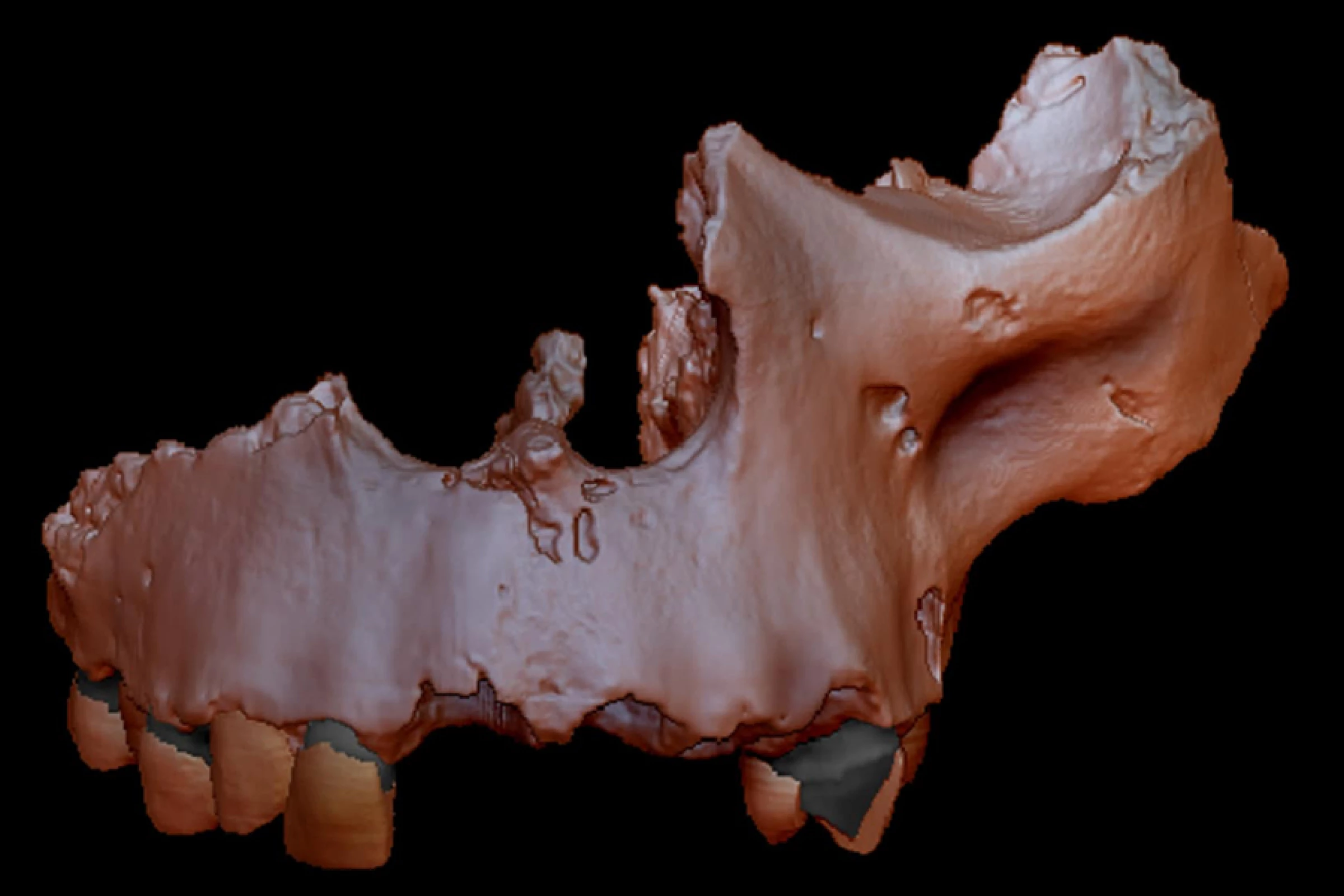A digital recreation of one of the main samples of Homo antecessor, which has now been placed on the family tree thanks to studies of ancient proteins in its teeth
Professor Laura Martín-Francés
Professor Laura Martín-Francés
It’s hard to piece together the full history of human evolution from piles of old bones. But now, scientists have made use of a new method to study proteins in dental enamel of an 800,000-year-old human species, helping place it in the family tree.
Although Homo sapiens is the only human species still alive today, the road to get here is paved with extinct relatives. And untangling how they’re all related to each other is a task that scientists continue to wrestle with. The timeline is usually determined through various dating processes, both on the bones themselves and the sediment layers they’re found in. Relationships between species are then determined from this timeline, and by examining the structures and features of the bones to track the progress of evolution.
Read the rest of this article...

No comments:
Post a Comment
Note: Only a member of this blog may post a comment.